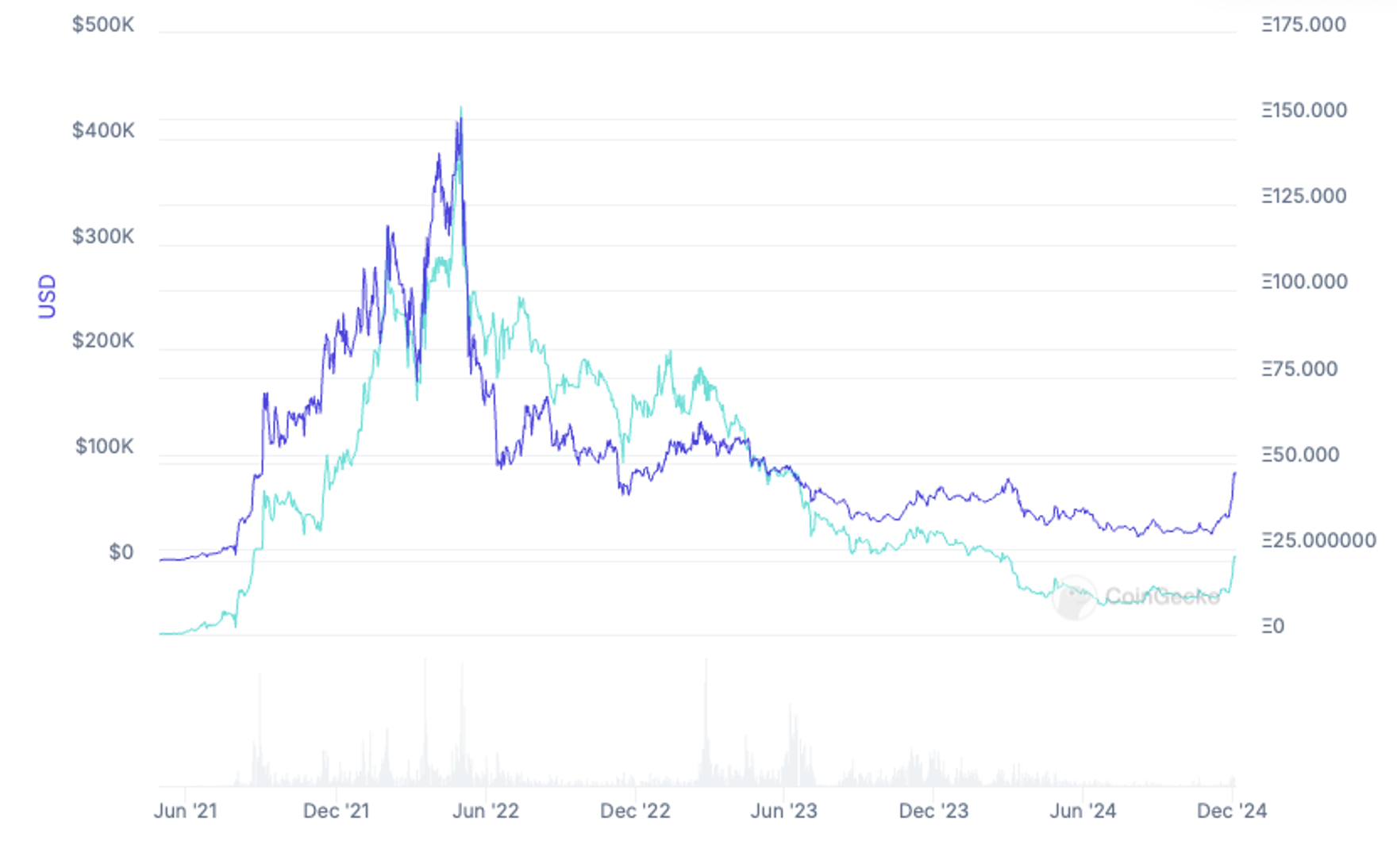
Bored apes and bananas part. 1
John Templeton famously observed; bull markets are born on pessimism, grow on scepticism, mature on optimism, and die on euphoria.
With several commentators now labelling markets euphoric, the call for a correction is becoming louder.
In the absence of a correction, the U.S. S&P 500 index will post two consecutive years of gains above 20 per cent at the end of this calendar year. That has only happened five times in the last 150 years: 1927-28, 1935-36, 1954-55, 1995-96, and 1997-98.
Back in 2022, 2023, and at the beginning of this year, we invited, nay, urged investors to add to their equity investments. You can read a sample of those suggestions for 2023 here and 2024 here.
For many, the two years of strong gains have come as a shock. Some investors are wondering only now if it’s time to invest. Others are asking if it’s already too late.
For what it’s worth, I believe 2025 will also be a good year for equities. Indeed, it could be the best year since markets began recovering from their 2022 slump.
There are warning signs – mind you, there always are.
Bubble trouble?
A week or two ago, a Chinese cryptocurrency entrepreneur paid US$6.2 million for an art piece consisting of a banana attached with duct tape to a white wall (see Figure 1.).
The sale of Banana Art is reminiscent of the first price boom in Bored Ape Yacht Club non-fungible tokens (NFTs). Perhaps there’s more than just a little coincidence – apes and bananas.
Back in 2022, digital art NFTs, in this case, cartoon ape faces adorned with various headwear, fetched as much as US$415,000 each. One individual Ape sold for US$3.4 million. They subsequently crashed to just US$22,000. Today, speculators are at it again, with Bored Ape NFTs quadrupling in price to just under US$90,000 each.
Figure 1. Bored apes and art go bananas

Figure 2. Bored apes are less boring again (USD and ETH)

While speculation in collectibles and riskier asset classes coincides with bubbles, it isn’t the cause of a bubble’s demise.
Only if the risks posed by price falls are systemic – for example, if the asset in question appears in scale on the balance sheets of systemically important banks – should investors sell out and run.
In the case of bitcoin, banks don’t own it, yet. If Trump succeeds, however, in his aim for the U.S. to be the bitcoin bank of the world, then perhaps an argument could be constructed to suggest the current love affair for the U.S. is misplaced and a crash will morph into a crisis.
In 2022, leaning gently on John Templeton’s famous quote, I estimated it would take at least three years for the despondency then permeating markets after interest rates surged to turn into a full-blown bubble. That’s because it takes time for a thesis – that prompted wiser initial investors to buy – to gain traction before morphing into a self-fulfilling rally, at the end of which late buyers are overpaying for the same thesis as the initial buyers.
Because information is not distributed equally or evenly, and because inertia and scepticism have to be overcome with rising prices, a trending rally takes time to develop.
Eventually, however, its magnitude and persistence convince even the most resistant participants to jump in amid a fear of missing out. Often, they do so without due diligence or reflection. And by then, having drawn everyone in, the rally is maturing.
Booms often begin with a rally in the price of lower-risk assets such as bonds. Investors who fear they have missed that rally then move up the risk curve into assets that have yet to participate, such as equities and property. As that boom continues, speculative assets such as collectibles join the party and eventually, a bubble forms. Often referred to as an ‘everything rally’, a bubble is really only definable looking backwards.
Defining the peak is almost impossible because even extreme overvaluation can persist for a long time. Many investors will point to speculative fervour or stretched valuations as often, or always, preceding a crash and that is true those conditions aren’t themselves triggers for a crash.
Even today, experts debate the cause of the 1987 Black Monday stock market crash with theories including a slowdown in the U.S. economy, a drop in oil prices and escalating tensions between the U.S. and Iran.
Even amid a boom in equities, house prices, gold, and bitcoin, and excitement around themes including atrtificial intelligence (AI), cloud computing, robots replacing humans, and the energy transition I don’t know if we are in a bubble or at the late stages of a boom. Indeed, we could just be at the halfway mark or even earlier in the current boom’s life.
If you haven’t yet, read Bored apes and bananas – Part 2